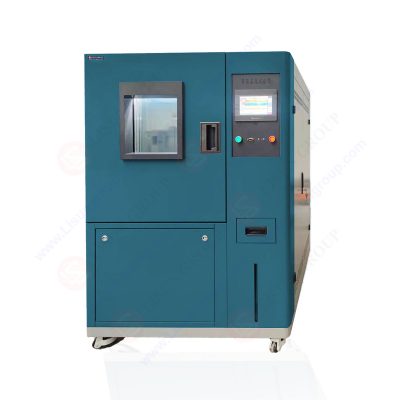
The ozone aging test chamber is designed specifically to simulate and test the aging performance of materials in an ozone environment. Widely used in the research, production, and quality control of polymer materials such as rubber, plastic, and coatings. This article provides a detailed overview of the ozone aging test chamber’s basic principles, technical parameters, usage methods, and precautions.
Basic Principles:
The ozone aging test chamber utilizes the oxidative action of ozone to simulate the environmental factors such as ozone concentration and temperature that materials face during actual usage. This accelerates the aging process of materials, allowing for the prediction of future performance changes.
The ozone aging test chamber typically consists of several core components:
• Chamber: The main body of the test chamber, used to accommodate samples and ozone generators.
• Ozone Generator: Produces specific concentrations of ozone.
• Temperature Control System: Regulates the temperature inside the test chamber to ensure test accuracy.
• Humidity Control System: Controls the humidity inside the test chamber to simulate various environmental conditions.
• Sample Rack: Supports the samples and is usually adjustable in height and angle.
Important technical parameters of the ozone aging test chamber include:
• Airflow Rate: Determines the oxygen concentration inside the test chamber.
• Temperature: Reflects the temperature environment in actual usage.
• Humidity: Reflects the humidity environment in actual usage.
• Power Voltage: Affects the stability and lifespan of the equipment.
OTC-015A_Ozone Test Chamber
Usage Guidelines–Follow these steps when using the ozone aging test chamber:
• Power on the equipment, turn on the device switch, and carefully check if all parts are functioning properly.
• Place the samples to be tested inside the chamber and adjust the position and angle of the sample rack to ensure exposure to ozone.
• Set the temperature, humidity, ozone concentration, and other parameters as required, and initiate the test.
• Observe the aging condition of the samples, regularly record relevant data including aging time and appearance changes.
• After the test, turn off the equipment, remove the samples for subsequent analysis to assess the degree of aging and performance changes.
Safety Precautions–When using the ozone aging test chamber, observe the following precautions:
• Do not open the chamber arbitrarily during equipment operation to prevent accidents.
• Regularly inspect the equipment’s operating status during the test; if any abnormalities are found, stop the test immediately for maintenance.
• Clean the interior of the equipment promptly after the test to maintain cleanliness and hygiene.
• Perform regular maintenance on the equipment to ensure normal operation and prolong its lifespan.
Conclusion:
The ozone aging test chamber is a crucial equipment in material aging testing, capable of simulating and testing material aging performance in ozone environments efficiently. It provides essential reference for the research, production, and quality control of materials. Proper attention to equipment operation and safety ensures its effective and safe usage.
https://www.lisungroup.com/news/technology-news/ozone-aging-test-chamber-principles-parameters-and-usage-guidelines.html
.jpg)
Comments
Post a Comment